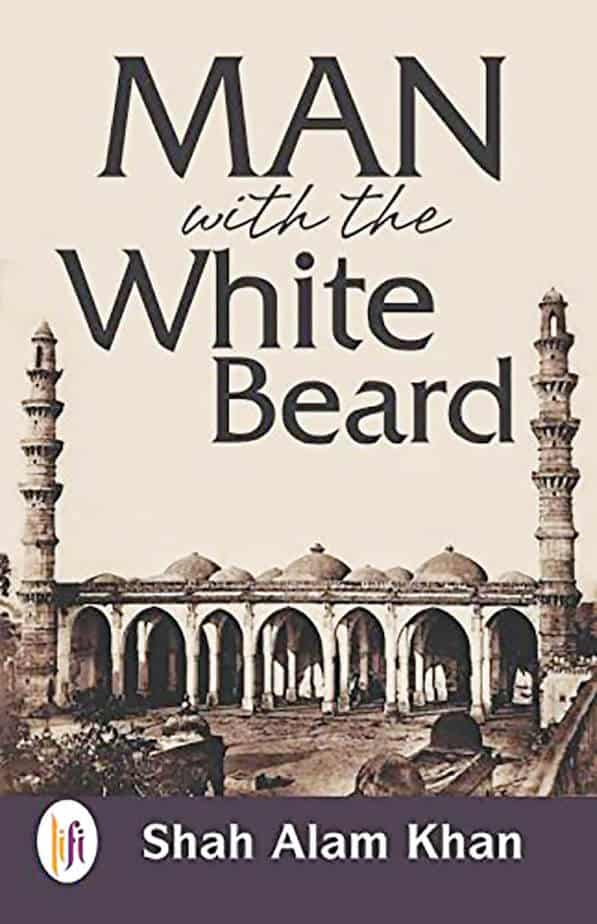
Here is a historical fiction that obsessively deals with the nightmares (literally) that took place in Delhi’s Trilokpuri, Ahmedabad’s Gulberg Society and Kandhamal. Only those unaware of the fear psychosis spreading its tentacles among the minorities would ask what is the need to scratch at old wounds – for it seems the wounds have not healed, neither 34 years after 1984, nor 16 years after 2002. Writers and researchers continue to probe into these milestones, especially as the two parties responsible for the riots continue to solicit votes and form governments as if their hands were not stained with blood. The crowning irony is that the electorate has to choose one or the other, other political parties being of a regional character.
The author, Shah Alam Khan, a professor of orthopaedics at India’s top medical institution, has worked out a plot so crafty that the identity of the Man with the White Beard remains a mystery till the end —though when a reader finds out who he is, there is a feeling of exasperation that one did not guess it earlier. For much of the book, this reviewer was lulled into a belief that the narrative was not leading to any particular climax, and that there would not be a twist at the end. But then, cultivating that sense of complacency turns out to be the author’s master stroke.
For Indians who read everything in the newspapers as if their lives depend on it, the details of marauding mobs and lives rent asunder by riots are only too familiar. The main protagonist is Kulwanti, the Sikh girl who sees her brothers pursued by mobs, and tries to live a ‘normal’ life after marriage. But the searing memories keep recurring, and later she is puzzled to find that even her son is haunted by images too horrific for his tender age. Enter a Muslim woman who has fled from Gujarat and a Christian young man from Odisha, and the theme of the novel becomes clear.
A cameo, if you like, is playing by Flying Sikh Milkha Singh, who comes to an athletics meet at Kulwanti’s son Goldy’s school and gives him an encouraging pat. The endearing little boy, with his patka and later his turban, is bound to tug at readers’ heart-strings. We are introduced to the concept of ‘sarpat pakarh’, an old trick used by Indian runners. The ground is hit with force, raising dust, confusing other runners on the verge of overtaking. Of course, we are told, the advent of synthetic tracks deprived Indian athletes of this stratagem. But it was put to good use by Kulwanti’s brother, who used it to save her life during the riots, a fact she realises only years later.
The author has many wry comments about Indian idiosyncracies to relieve the agony that is the surround sound of the book. Here are some:
*Administrative reasons in India could mean anything. It could be an administrative reason to deny safe drinking water to a whole village or to submerge the same village under water from the opening of flood gates of a nearby dam. The blue book of administrative reasons was like a bag full of snakes.
* For him, studies were like a spanner thrown into a moving wheel, which damages the wheel only slightly, but brings it to a crude halt with a clanking sound.
* The predictability of life is what makes it difficult but unpredictability can be as frustrating as the feeling on a birthday gift you never wanted.
*But despite so many hints of prospective love, most mothers-in-law in India still hated their daughters-in-law (sons-in-law, by the way, were to be ignored and respect by their in-laws, irrespective of the hatred they generated).
There are no substantial Hindu characters in this book, except, predictably the Swami who hated Kondha converts to Christianity more than original adherents to the faith and whose death unleashed mob violence in Kandhamal villages, forcing tribals to flee. The community finds mention only as killers, the ‘other’ who are cruel to minorities and have no redeeming features. This puts the book in the genre of William Dalrymple’s White Mughals, where only once is a peasant mentioned in passing, as if the masses didn’t exist, and Hyderabad was just a backdrop for the liaisons between the Nawabs and the British.
The Sikhs, Muslims and Christians in the book under review cling to each other as support systems, a fact which subliminally reinforces the notion nurtured by Hindus that they are being swept to the sidelines in their own land.
Only one Hindu young man seen to be any good, courageously rescuing a family in the post-Godhra riots. He, however, is like a cardboard cutout, and is dismissed in a few sentences: “Our Vishwas left this country. He migrated to the US with his family. He said, ‘I am dejected with the idea of India. It’s a cowardly and violent society. It’s too cruel.’”
If an alien were to read this book, she would not understand that the country’s abiding character trait has been tolerance, and that in four years of Hindu majoritarian rule, there has been more fear-mongering than actual physical harm. It is up to the public to decide which narrative it believes in, the pessimistic or the optimistic one. Can a nation overcome its past and discover the power of positive thinking? n
Veer Ahlawat’s final-round 67 sealed a three-shot win at the Rs 1 crore CIDCO Open…
OnePlus has launched the 15R smartphone and Pad Go 2 tablet in India, with prices…
Nearly 2,800 Delhi vehicles denied fuel on first day of 'No PUC, No Fuel' drive…
Delhi Police arrested five men in two fake investment scams, unearthing a Rs 24 crore…
The ED seized cash, silver and gold worth over Rs 19 crore in fresh raids…
Boho Bazaar’s Christmas edition returns to Delhi on December 20–21 with 300+ brands, live music…